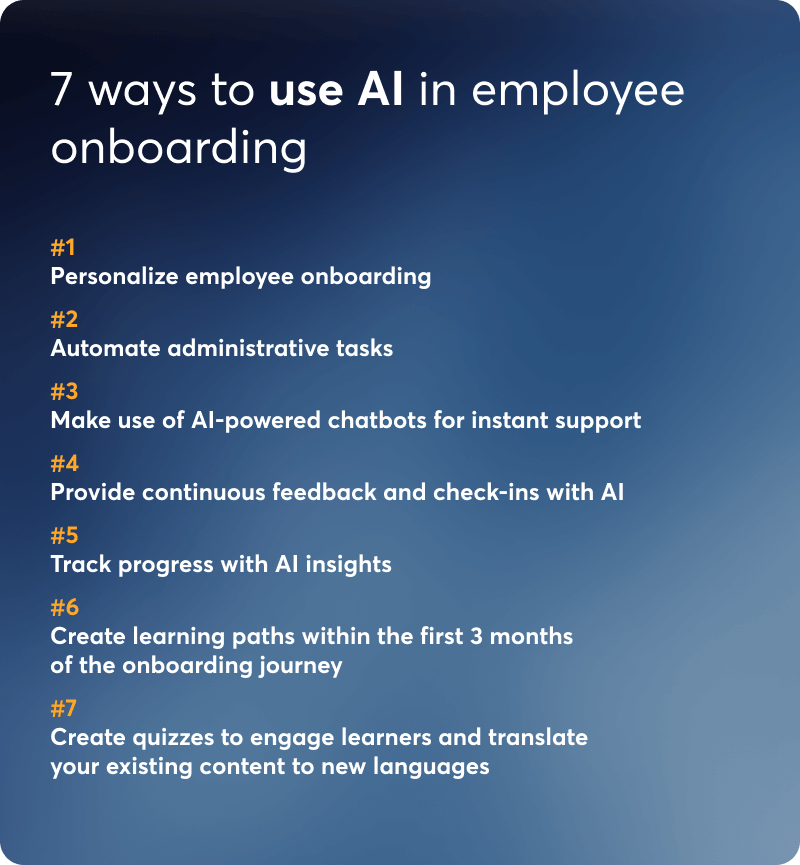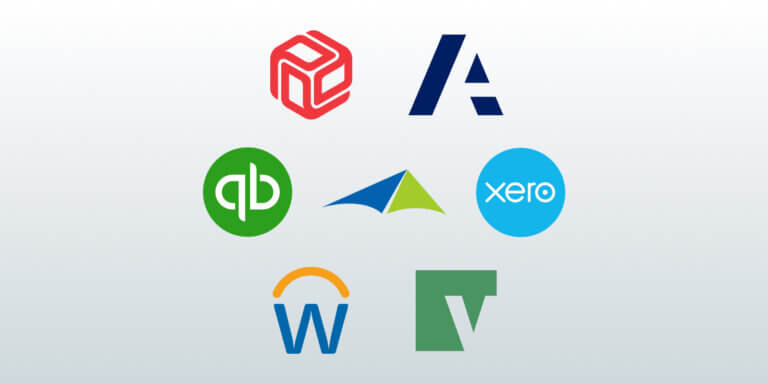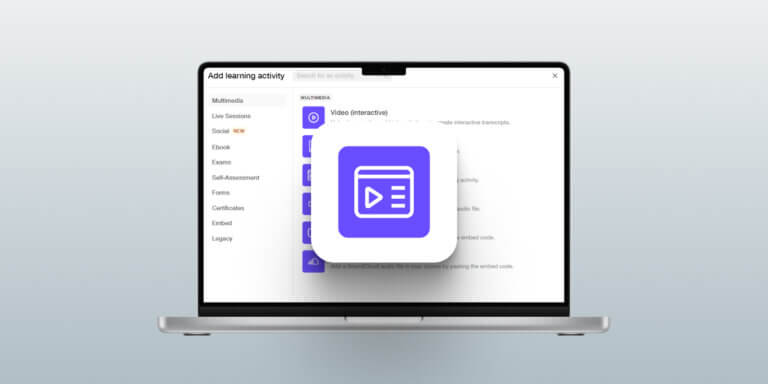Table of Contents
Do you onboard new employees but struggle to keep the process engaging and consistent?
What if your onboarding process feels more like a chore, for both your HR team and the new hires?
Or perhaps you wonder how is it possible to onboard remote employees effectively without overloading your team?
You’re not the only one dealing with these issues. Many businesses struggle with high employee turnover, low engagement, and the slow process of traditional onboarding. Studies show that disengaged employees cost companies about $90 million each year in lost productivity [1]. Moreover, a strong onboarding experience engages your new hires, and this has a significant impact.
Engaged employees are more likely to show up consistently and contribute more. According to research, teams with high engagement have an 83% chance to perform above the median and have fewer absences and an up to 14% boost in productivity [2]. Still, when the onboarding process fails to engage and equip new hires, it sets the tone for missed opportunities and reduced retention.
Imagine an onboarding process that works smoothly, saves your HR team a lot of time, and helps every new hire feel welcomed, informed, and ready to start. This can be done with AI-powered onboarding tools designed to automate onboarding effectively.
As Bernard Marr says,
In this article, we will explore how you can automate onboarding and how automated onboarding tools can help your organization address onboarding challenges, maximize productivity, and create and create a better experience for new employees.
Whether you are looking to enhance the AI onboarding journey for employees or focus on streamlining onboarding with AI, this guide provides actionable insights to get started.

Key takeaways
What is employee onboarding?
Employee onboarding is the process of welcoming new hires into an organization and equipping them with the knowledge, skills, and resources they need to succeed. A well-structured onboarding process includes training, socialization, and familiarizing employees with the company culture.
Following such an approach you ensure that new employees feel valued, prepared, and connected. That way you create a seamless onboarding experience that enhances employee satisfaction and engagement.
By solving onboarding challenges and providing continuous support, organizations can keep their employees longer, increase productivity, and improve employee retention, making onboarding a benefit for both the organization and its employees.
What is AI-powered employee onboarding?
I am sure you can imagine a new employee joining your company full of excitement, but after just a few weeks, they feel overwhelmed, disconnected, and unsupported. Does this sound familiar? This happens often, especially for businesses with limited resources or remote workers.
Studies show that effective employee onboarding processes are key for employee retention, but many companies still face problems like inefficiency, inconsistent training, and a lack of personal support [4].
This is where AI-driven onboarding solutions come in to help improve the process. But what exactly is AI-powered employee onboarding? At its core, this approach uses generative artificial intelligence (AI) to create an automated onboarding process for the employee onboarding experience.
Let’s see how the AI enhances the steps of the entire automated employee onboarding process:
From streamlining employee onboarding with AI to creating personalized learning paths, companies are turning to AI-driven onboarding solutions to:
Do you realize how simple the solution is? Using AI-supported onboarding solutions can make the whole process smoother and more engaging. In the next part, we will look at the main benefits of these tools and how they solve the biggest problems faced by HR teams, training departments, and business leaders.
Benefits of AI in employee onboarding
We will now discuss the potential that AI-driven onboarding processes offer, like limiting repetitive administrative tasks, personalizing onboarding processes, and saving costs. We hope that after reading this article you will realize that AI-driven onboarding solutions can redefine employee onboarding and employee training process.
Streamlined administrative tasks
What if onboarding paperwork could handle itself? Instead of spending hours verifying employment details, collecting personal documents, and entering data manually, your team could focus on what matters—welcoming and supporting new hires.
This isn’t wishful thinking. AI-enabled employee onboarding automates onboarding manual processes by managing employment verification, document collection, and data entry. These systems ensure that everything happens seamlessly and accurately, reducing errors and saving valuable time for HR staff.
Streamlining employee onboarding processes with AI allows you to create a more human, impactful experience—while the tech takes care of the rest.
Enhanced personalization
Do you remember your very first day at work? Were you made to feel special or just another face in the crowd?
For many employees, onboarding feels generic and uninspired. But it doesn’t have to be this way. Personalized AI onboarding plays a crucial role in the AI journey for employees by ensuring that every new hire feels valued and supported by tailoring their experience to their unique needs.
AI onboarding tools analyze skills, the new hires’ profiles and career goals to create customized training paths. For example, a technical employee might receive hands-on modules, while a new manager might be guided toward leadership programs. AI can even deliver employee multilingual onboarding materials to support diverse teams.
Consider all the above and you show your employees that they matter while boosting their engagement, confidence, and satisfaction.
Cost-effectiveness
Employee onboarding doesn’t have to cost more as your team grows either. Does this come as a surprise? Unlike traditional methods that demand more resources as hiring scales, AI-driven employee onboarding processes handle growth without additional costs. Here’s how:
Having read about the key benefits of AI in employee onboarding, here is my question to you. How could AI-supported onboarding transform your organization? Please take a moment to think about it. The potentials are clear to me, but if you don’t feel ready yet to answer this question, you better keep reading.
In the next part, we will turn to practical strategies and explain how you can use AI in employee onboarding to improve its impact on your business.
How to use AI in employee onboarding
Let’s dive into the practical side of things. You have read about the benefits of an AI-powered onboarding process, but how do you actually apply these tools in your organization?
Regardless of whether your goal is to simplify repetitive tasks, create personalized AI onboarding journeys, or enhance the experience for new employees, this section offers actionable ideas to ensure a successful onboarding process.

Personalized onboarding experiences
Personalization is at the heart of a great onboarding experience. With the right AI onboarding tools, you can tailor the onboarding process for each employee by analyzing their skills, career goals, and role-specific needs. For example:
This level of personalization solves common challenges faced by HR departments, such as onboarding newly hired employees with varying levels of experience.
Automating administrative tasks
The most time-consuming part of onboarding is often the paperwork. This is where automated onboarding processes shine, transforming the way HR staff manage administrative tasks.
AI can handle:
AI saves HR professionals hours of work per hire and reduces delays caused by human error, especially by automating administrative tasks.
This means new hires walk into a fully prepared environment where they can start contributing immediately, fostering a smooth transition into their roles. At the same time, HR teams can focus on creating an experience that makes employees feel welcomed rather than getting bogged down in administrative details.
AI-powered chatbots for instant support
AI-powered chatbots are like having a personal onboarding buddy available 24/7. For new hires, the onboarding process can feel overwhelming, especially when they are navigating new systems, policies, or tools.
Chatbots can simplify this experience by providing instant answers, guiding employees through the onboarding steps, and managing routine tasks.
Here’s how they help:
According to IBM [5], IBM’s Watson Assistant reduced the time employees spent on common HR tasks by 75%. With AI handling these repetitive onboarding tasks, HR staff can invest their time on creating a more meaningful onboarding experience for the new team members.
Continuous feedback and check-ins with AI
Feedback is an important part of a good onboarding process, and AI makes it effortless. AI tools gather feedback from new employees, helping them get the support they need to succeed.
Here’s how it works:
AI helps HR professionals gather and analyze feedback, ensuring the transition of employees progresses smoothly and the onboarding process continues to evolve.
Tracking progress with AI insights
AI insights help HR teams to see both the overall trends and the finer details of their employee’s onboarding.
With AI insights, HR professionals can ensure every employee’s unique needs are met promptly, leading to better employee engagement and higher retention rates. This is extremely important to remember and that’s why I need to mention once again what a Gallup survey revealed [2]:
Companies with engaged employees experience see higher chances of having lower absences and improvement in profits compared to companies with low employee engagement rates.
Create learning paths within the first three months
The first three months of onboarding are critical for setting up new hires for success. According to the 14th annual Job Seeker Nation Report [6], 24% of employees leave their jobs within the first 90 days of starting a new role. For HR teams and hiring managers, this shows how crucial it is to have a clear and engaging onboarding process to stop employees from leaving too soon.
AI tools create personalized and structured training plans for each new employee, giving them the skills and knowledge they need to do well.
For example, in a retail company, AI might create a training path for a sales associate that prioritizes product knowledge, customer communication, and checkout processes. For an IT specialist, it would focus on troubleshooting workflows and internal system navigation.
Structured programs created with AI ensure that each new team member gets the support they need, resulting in higher employee satisfaction, engagement, confidence, and seamless integration into their role.
Create quizzes to engage learners and translate your existing content to new languages
AI has made creating quizzes and translating onboarding materials easier than ever. Engaging new employees in the onboarding process is vital, and quizzes can help reinforce key concepts while making learning interactive.
Generative AI tools embedded in an LMS allow HR professionals to quickly create:
Therefore, testing understanding but also keeping employees engaged throughout the onboarding process becomes even easier.
Apart from quizzes, translating content is also critical. So, if you are engaged in global onboarding processes, fear not. AI makes it easy and simple for companies to translate training materials for international employees:
With AI simplifying quizzes and translations, HR teams can build a more accessible onboarding process for remote onboarding and international hires, ensuring new hires feel welcomed and supported at all times.
Final thoughts
In the AI journey for employees, onboarding begins with addressing the challenges that HR professionals and hiring managers face daily: managing onboarding tasks, engaging new employees, and improving employee retention.
Throughout this article, we have highlighted how AI-driven onboarding tools simplify processes, create tailored learning paths, and track progress to ensure every new hire’s onboarding experience is engaging and productive.
But achieving all of this in one place might feel like a daunting task. LearnWorlds is the all-in-one LMS that can support you in transforming the entire employee onboarding process into an efficient, personalized, and measurable automated employee onboarding journey.
Our platform offers several features that allow HR professionals and L&D teams in particular to deliver personalized employee training experiences:
LearnWorlds goes even further with its AI tools, offering advanced capabilities like:
These tools automate repetitive tasks while simultaneously enhancing employee engagement. Moreover, they empower HR teams to create a seamless onboarding experience that supports organizational goals.
Have you considered how much smoother your onboarding process could be if you chose to implement AI for employee journey automation using an all-in-one platform like LearnWorlds? What could a more engaging, efficient, and scalable onboarding journey mean for your team and your company’s future?
The next step is yours to take. If you are ready to give AI-powered onboarding a try, explore how LearnWorlds can reimagine the way you onboard and train employees, enhance employee satisfaction, and set your organization up for long-term success. Start building a personalized, AI-enhanced onboarding experience today with LearnWorlds’ free trial and see the difference it makes for your business.
FAQs
What is the AI onboarding process?
AI onboarding is the onboarding process that uses artificial intelligence to enhance and streamline the way new employees are welcomed into a company. Streamlining onboarding with AI means handling and automating repetitive tasks like document collection training session scheduling and more, making the process more efficient and engaging.
What is AI-powered recruitment?
AI-powered recruitment is the recruitment process that leverages AI onboarding tools to optimize and automate parts of the hiring process such as screening resumes, scheduling interviews, and assessing candidate fit through predictive analytics.
How to onboard your team to work with AI?
Here are the steps on how to onboard your team to work with AI:
How can AI create personalized onboarding experiences?
AI personalizes the onboarding journey by analyzing employee data—such as skills, roles, and goals—and curating tailored learning paths, training content, and even communication. Platforms like LearnWorlds enhance this personalization through features like custom navigation paths, segmented communication, and curated resources.
Sources
[2] https://www.gallup.com/workplace/321725/gallup-q12-meta-analysis-report.aspx
[4] Ritz, E., Donisi, F., Elshan, E., & Rietsche, R. (2023). Artificial Socialization? How Artificial Intelligence Applications Can Shape A New Era of Employee Onboarding Practices. In Proceedings of the 56th Hawaii International Conference on System Sciences (pp. 155-164). Maui, Hawaii, USA.
[5] https://www.ibm.com/think/topics/chatbots-for-hr
[6] https://www.jobvite.com/lp/employ-job-seeker-nation-report-2024/#report
Panagiota is an Instructional Technologies Specialist at LearnWorlds, holding a Ph.D. in Technology Enhanced Learning. Her research focuses on the integration of educational technologies into learning and instruction. In her spare time, she enjoys gardening and staying connected with nature.





